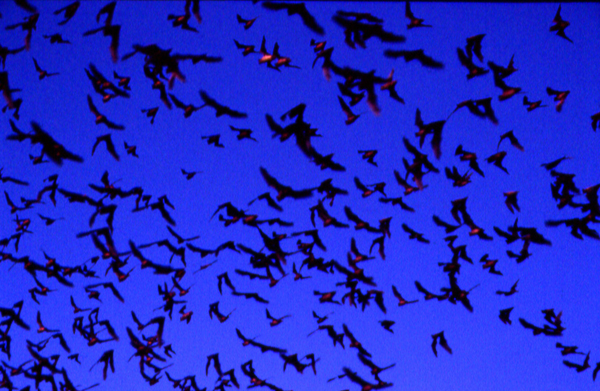- La Feria Community Holds Succesful Business Mixer Event
- Little Nashville to Take Place in Downtown Mercedes
- Lions Basketball Captures District Gold
- La Feria ISD Students Compete in Regional Chess Tournament
- Lions End First Half of 32-4A on a High Note
- La Feria ISD Held Another Successful Parent Conference
- Strong Appearance for Lions at Hidalgo Power Meet
- LFECHS Students Get to Meet Local Actress
- Students Participate in Marine Biology Camp
- Two LFECHS Students Qualify for All-State Band
Fungus Causing White-Nose Syndrome in Bats Continues to Spread in Texas
- Updated: May 17, 2019
AUSTIN — The fungus that causes white-nose syndrome (WNS) in bats has continued to spread into parts of Central, South, and East Texas, according to the Texas Parks and Wildlife Department.
The fungus was detected for the first time in Texas in early 2017 in six Panhandle counties. This year it was detected at 22 sites in 16 counties, 11 of which were new. There are now 21 counties in Texas where the fungus has been detected in Texas. It was found on 43 cave myotis, 4 tri-colored bats, and 13 Mexican free-tailed bats. No signs of WNS, the disease in bats caused by the fungus, were reported. Biologists say it usually takes a few years after detecting the fungus for the disease to manifest.
A detection in Liberty County is the first yet in East Texas. Detections in Frio and Victoria Counties are now the most southerly detections of the fungus in the country.
“The amount the fungus has spread this year is concerning” said Jonah Evans, TPWD mammologist. “On the bright side, we have yet to observe any signs of white-nose syndrome and there is some hope that the disease won’t be as severe in Texas as it has been in states further north. Also, because Mexican free-tailed bats primarily migrate during the winter and fungus is deadly to bats that hibernate, we are hopeful that it won’t severely impact this species.”
The syndrome has killed millions of hibernating bats in the eastern parts of the United States, raising national concern. It only poses a risk to bats and does not pose any threat to humans.
White-nose syndrome is caused by the cold-adapted fungus Pseudogymnoascus destructans and has been rapidly spreading since its discovery in New York in 2007. It is thought to have been introduced from Europe where bats appear to be resistant to the fungus. In some parts of the eastern United States there have been declines in winter bat numbers of greater than 90 percent. Because bats usually produce just one offspring per year, researchers are concerned it could take many decades for some populations to recover from a major decline.
Skin swabs that test for presence of the fungus on bats’ wings and muzzle were collected between December 2018 and April 2019 by biologists from Bat Conservation International (BCI), the Texas A&M Natural Resources Institute, and Texas Parks and Wildlife. Analyses were conducted by Northern Arizona University and the USGS National Wildlife Health Center as part of on-going research projects.
Treatments for WNS are in early phases of development. Texas Parks and Wildlife, Texas A&M, and Kennesaw University are collaborating on an effort to test treatments to prevent WNS on tri-colored bats roosting in culverts in East Texas this winter. The project is funded by the National Fish and Wildlife Foundation. Bat Conservation International has also tested treatments where the fungus first appeared in the Texas panhandle.
Bats play an important role in the ecosystem by consuming large numbers of insects. Recent studies have shown that the value of insect control by bats to agriculture is $1.4 billion annually in Texas alone. This value includes reduced crop loss to insect pests, reduced spread of crop diseases, and reduced need for pesticide application.
A locator map of fungus detections in Texas in 2019 is available online at https://flic.kr/p/TFu1f9 .



